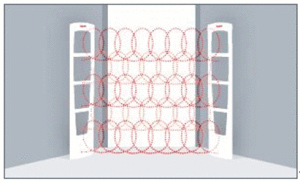To fix a problem, you first need to know what is wrong with it. Shoplifting and employee theft are two of the main causes of billions of dollars lost in the retail industry every year. Employers and management personnel do not know how to fix those problems, and sometimes are not aware there is a problem till much later. If employees are caught stealing, the problems then are the financial costs associated with prosecuting such individuals. Is firing them enough punishment? Should the employer pay thousands of dollars in legal fees to bring such individuals to court? There are many issues associated with shoplifting, do you know what to do about them?
To read more about this topic, follow the links below.
Managing Retail Shrink Begins with Problem Identification
The retail shrink action plan should begin with problem identification.
One question I have been asked frequently is, “How did you know how to battle retail shrink in the grocery business, especially considering your background is predominantly in discount retail?” My response to that question is almost always the same, which is: “I follow the loss prevention road map.” Often I get blank stares, but after explaining, most understand and realize they have probably been following their own road map for years without realizing it.
I have always described the road map as a six-step process; one that takes years to perfect, but when executed properly can yield amazing results in not only retail shrinkage reduction, but any expense a company is attempting to minimize.
The process includes the following six steps:
• Step 1—Problem identification
• Step 2—Program development
• Step 3—Program execution, or what I like to call countermeasures
• Step 4—Comprehensive awareness programs
• Step 5—Auditing for compliance
• Step 6—Measurement



 For decades the gold standard of learning theory was that people needed to be told something 3 times before they really understood and remembered it. If you wanted people to learn something you were supposed to: tell them what you’re going to tell them, then tell them, then tell them what you just told them.
For decades the gold standard of learning theory was that people needed to be told something 3 times before they really understood and remembered it. If you wanted people to learn something you were supposed to: tell them what you’re going to tell them, then tell them, then tell them what you just told them.
 According to the
According to the 
 Is your burglar alarm giving you all it’s got? Technology keeps updating but there is one area you may not be thinking about getting more from your dollar: your burglar alarm system.
Is your burglar alarm giving you all it’s got? Technology keeps updating but there is one area you may not be thinking about getting more from your dollar: your burglar alarm system. My grandparents owned a small hardware store back in the late 1950s. Back then, when my grandpa left at 5pm, he simply locked the back door, gathered his belongings and left, locking the double glass front door behind him with nothing more than a standard lock that you’d find on any home at the time. The front of the store was nothing but glass. He had cash and at least $100k worth of merchandise on the shelves. Wouldn’t it be nice if things could go back to the way they were back then? Could you imagine if you left your store this soft nowadays? Burglaries happen, and they happen often. Over the past ten years as a Regional LP manager for my company, I’ve had it happen a total of 12 times. About once a year, or so, someone, somewhere across my region, breaks into one of my stores; or at least tries to do so. We have a lot of things that we implement to prevent this from happening, so when someone is able to breach our perimeter, it’s usually caused by human error.
My grandparents owned a small hardware store back in the late 1950s. Back then, when my grandpa left at 5pm, he simply locked the back door, gathered his belongings and left, locking the double glass front door behind him with nothing more than a standard lock that you’d find on any home at the time. The front of the store was nothing but glass. He had cash and at least $100k worth of merchandise on the shelves. Wouldn’t it be nice if things could go back to the way they were back then? Could you imagine if you left your store this soft nowadays? Burglaries happen, and they happen often. Over the past ten years as a Regional LP manager for my company, I’ve had it happen a total of 12 times. About once a year, or so, someone, somewhere across my region, breaks into one of my stores; or at least tries to do so. We have a lot of things that we implement to prevent this from happening, so when someone is able to breach our perimeter, it’s usually caused by human error.